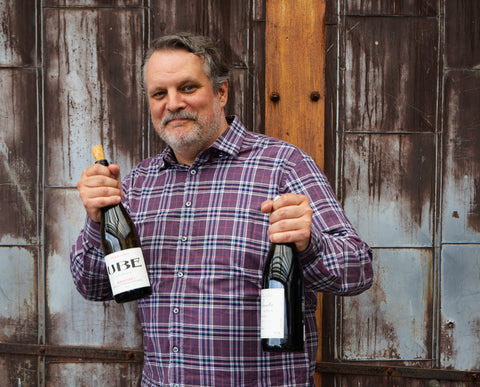Ask most anyone here in the U.S. to name a Spanish cheese, and you’ll probably get the same answer: Manchego. While we absolutely love these sheep’s milk wheels (especially from one of the last remaining farmstead producers in the country at Finca Sierra), there’s so much more to explore from this country with such an incredibly deep culinary culture.
But how did we come to this, the present day, where Spanish cheese seems, from the outside, a singular Manchego monolith? It’s a story that illustrates how politics, and policy, impact our food and culture. Of how fascism hurts food systems. And how tradition can be resurrected after being so nearly lost.
Spain is home to thousands of regional culinary specialties, from our favorite conservas to wines and olive oils made from native varieties. The breadth of these products reflects the varied climates; the land here spans warm Mediterranean climes and arid grasslands as well as rugged, mountainous coastlines. Its cheesemaking heritage reflects these varied climates too, and has a long history in these regions; there is evidence pointing to cheese production as early as 200 B.C.E. Why, then, are we so unfamiliar with the wild variety of Spanish cheese?
When Francisco Franco assumed his dictatorship in 1939 after winning the Spanish Civil War, he offered government subsidies for industrial food production, including cheese. To comply with his policies, artisanal cheese makers were forced to sell milk from their small herds to larger dairies — or to continue making artisanal cheeses underground. This shift all but squashed traditional cheesemakers and their small-batch capabilities (and created a black market for cheese) until the late 70’s.
Once the industrialization of the food industry subsided in the mid-1980s, the government instead began to offer cheesemaking classes in rural areas in an effort to revive some of their lost culinary heritage. Many of these classes were taught by several generations of women in rural villages — mothers and grandmothers who had kept cheesemaking traditions alive through some impossibly difficult times. You’ll find the new guard of Spanish cheesemakers those women inspired working with nearly-lost native breeds of sheep and goats. But they don’t just stick to the script of the past. While these producers are reviving traditional farmstead styles, they are also pioneering new approaches.
Along Spain’s rainy, mountainous northwestern coast, you’ll find cheesemakers working with hearty native cattle breeds to produce silky, slightly pungent, earthen tommes. The small region of Asturias alone boasts more than 40 heritage recipes, from single-herd styles to rich, high-fat mixed milks. Free-roaming herds climb the mountains in the summer months, with farmers following, often staying in tiny stone huts perched on the mountainside.
Castilla y León in the northwest is home to a large swath of this revivalist movement. Here, you’ll find herds of resourceful goats and sheep grazing on the arid plateau and low mountains. Take Joaquin Manchado Munoz, owner and cheesemaker at Moncedillo. He cares for his herd of native Churra sheep, a breed typically responsible for Zamorano production. Instead, he turns their milk into Red: tiny, earthy tommes coated in bright pimentón. Renneted with thistle, a traditional choice in this part of Spain and neighboring Portugal, these small wheels are painstakingly hand-rotated and brushed during their aging process. The cheese itself, though, is purely Joaquin’s invention.
Oscar Fernando Marcos Gonzalez, also a Castilla y León resident, is a success story born of those rural cheese classes: he models his Queso Leonora, named for its hometown, after a heritage style from the area. With only a few adjustments to the original recipe, his herd of Murciana and Alpina goats produces a wonderfully sweet brick of goat’s cheese.
Outside Madrid lies La Mancha, the region best known for Manchego production. While we love a classic, the cheesemakers at Finca Fuentillezjos are doing things a bit differently. One of the new guard of woman-led dairies , the cheesemakers at Finca Fuentillezjos operate a certified organic creamery with the milk from their Manchega sheep, awarded by the government for their dedication to sustainability. Their Albala Tierno is definitely similar to its famous Manchego cousin, but kept younger and sweeter. La Boina, a zero-waste-production cheese, is the farm’s own unique creation. Shaped like a traditional farmer’s hat, La Boina is a bright and lactic newcomer to the world of Spanish cheese.
The northeast of the country borders the famous Pyrénées mountain range; this crossroads of culture is one of Europe’s oldest and most prolific cheesemaking regions. Newer producers in goat-dominated Catalonia are forging their own paths among traditions that have otherwise remained largely unchanged. Quesos Cerrón was founded in a basement in 1987 by married couple Juana García and Juan José; motivated by the rapid depopulation of rural farming areas, they dedicated themselves to preserving the area’s dairying culture. Given the family recipe for fresh cheese by Juan’s own mother, this team (now including Juan and Juana’s three adult kids) works with Murcian-Granadian goats to produce wheels that complement the milk’s unique flavor, often ageing them much longer than is typical — sometimes up to three years — to achieve the intense, crystalline structure they’re after.
These joyous expressions of terroir in wheel shape are not to be missed. They’re the perfect remedy for these last few weeks of winter, calling to mind the expansive sunny grasslands of Spain. We love these with some of our favorite conservas, like the grilled octopus from Gueyu Mar, or the mussels and sweet kombu from Porto Muinos, new to our shelves. Round it all out with a bottle of Albariño and enjoy whatever sunshine heads your way.



